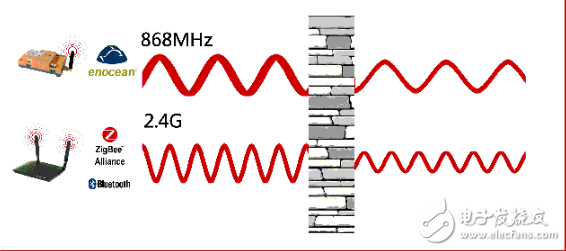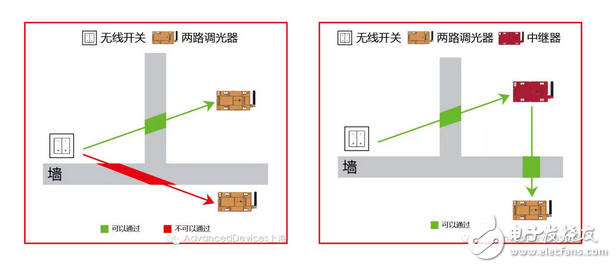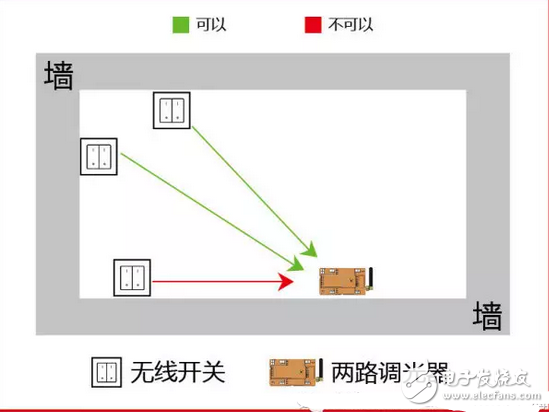There are some obstacles in using wireless products in our daily life. Sometimes it may be a problem of the product itself, but it may be that the construction worker does not notice some influencing factors during the installation process, which will lead to the failure of the wireless product.
When purchasing wireless products, radio signals often see different wireless frequency bands such as 433MHz, 868MHz, 902MHz or 2.4GHz. The wireless signal transmission loss is inversely proportional to the wavelength, which is proportional to the frequency. The higher the frequency, the greater the loss.
Since many technologies are based on the 2.4 GHz band, such as Bluetooth, WiFi, Zigbee, etc., the frequency band is crowded and causes many interferences. Therefore, a complex anti-interference mechanism is required, and multiple wireless signals are repeatedly transmitted, and the following is relatively less crowded and anti-interference below 1 GHz. The mechanism is simpler.
In addition, in order to achieve the same transmission distance below 868 GHz, 2.4 GHz needs to increase the transmission power. Therefore, the power consumption of a 2.4 GHz device is much larger than that of 1 GHz or less.
Therefore, under the same conditions, the transmission distance in the frequency band below 868 GHz is farther than 2.4 GHz, and the penetration is strong. Low power consumption is required, transmission distance is long, and the amount of data transmitted is small, and products below 868 GHz are selected. (such as in building control)

First, we must know the characteristics of wireless attenuation. Below are some guidelines for wireless product installation.
Attenuation rate of different materials
It is very important to transmit the angle of the signal through the wall. The effective wall thickness (signal attenuation) varies with this angle. Signals should be transmitted directly through the wall as much as possible. TIps: Avoid unfavorable penetration angles by locating the transmit/receive antenna or using a repeater. For example, AdvancedDevices two-way dimmer 丶 wireless switch use

When using equipment with an internal receiving antenna, the equipment should not be mounted on the same wall as the transmitter. Near the wall, radio waves are likely to be disturbed to disperse or reflect. Therefore, the position of the antenna must be on an opposite or connected wall. When using a device with an external antenna, the ideal antenna mounting location is the center of the room, and the antenna is at least 10 to 15 cm from the corner or concrete ceiling. TIps: Avoid radio propagation along walls (assuming a narrow room).

The distance between the EnOcean receiver and other transmitters (eg GSM / DECT / WLAN) or high frequency interference sources (computer, audio / video equipment) should be at least 50 cm. However, the EnOcean transmitter can be installed next to any other high frequency transmitter without any problems. TIps: The distance between the EnOcean receiver and the different types of high frequency transmitters is at least 50 cm. The position of the transmitter is not important.

Power cord can be used in wide range of industries. Home appliances, charging equipment, lighting, Gym appliance, computer, tool, pump, compressor, medical equipment, and so on. All products which are driven by electricity need a power cord.DC (direct Current) power cord is used to the applicance with lower voltage mostly, so safety requirement is less stringent.
DC Power Cord, power cable, DC cable, power connector
ETOP WIREHARNESS LIMITED , https://www.wireharness-assembling.com